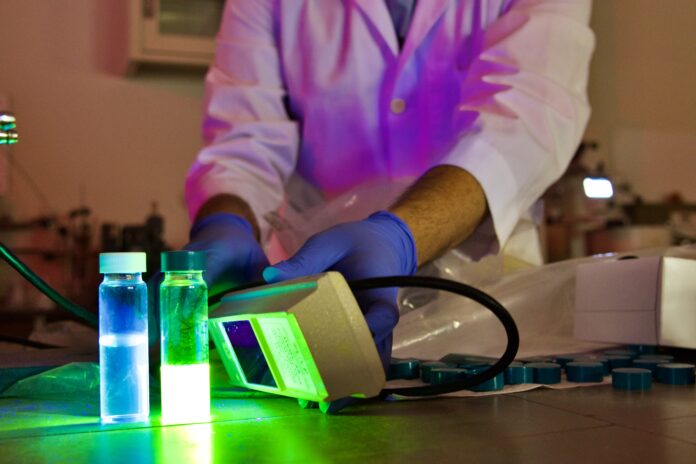UNLV Professor Pradip Bhowmik’s materials chemistry lab is responsible for green chemistry research and groundbreaking exploration on ways to detect Azheimers in its early stages.
Four active undergraduate students are a part of continuing the research for the Bowmic lab, these students in particular are pre-professional STEM students.
“My favorite part of conducting lab research is being able to work with amazing people who are both serious about research but also passionate about helping others,” said Matthew Le, a student in the material lab.
These student researchers work alongside Bhowmik as mentees and get to contribute by conducting research on green chemistry, fluorescent molecular probes for the early detection of Alzheimer’s, fire retardant polymers, and more. Much of the lab’s daily tasks revolve around conducting experiments with different chemicals and purifying the byproducts that can form from experiments.
“We are interested in developing novel light-emitting and liquid-crystalline polymers for their multitude of applications in modern technology, including biosensors. In another project, we are developing ionic liquids based on the concept of green chemistry, and liquid-crystalline and light-emitting organic salts to make them functional materials,” Bhowmik said.
David King joined the lab back in spring 2020 with hopes to be immersed in field lab work for career development and contribute to groundbreaking research he was passionate about.
“Using this lab as a stepping stone, I want to be able to develop the technical skills and leadership necessary to pursue my passions of being a organic chemistry professor where I can mentor and guide other students in material chemistry,” King said.
King and Le believe their greatest contribution to the lab was the publishing of the article titled, “Dicationic stilbazolium salts: structural, thermal, optical, and ionic conduction properties” in a high impact journal called the Journal of Molecular Liquids.

